Abstract
Paleopathology, the study of disease in ancient remains, adds the dimension of time to our study of health and disease. The oldest preserved heart is from a mummified rabbit of the Pleistocene epoch, over 20,000 years old. Cardiovascular disease has been identified in human mummies from Alaska and Egypt, covering a time span ranging from approximately 3,000 to 300 years ago. An experimental study suggests that the potential exists for identifying a wide range of cardiovascular pathologic conditions in mummified remains. The antiquity and ubiquity of arteriosclerotic heart disease is considered in terms of pathogenesis.
Full text
PDF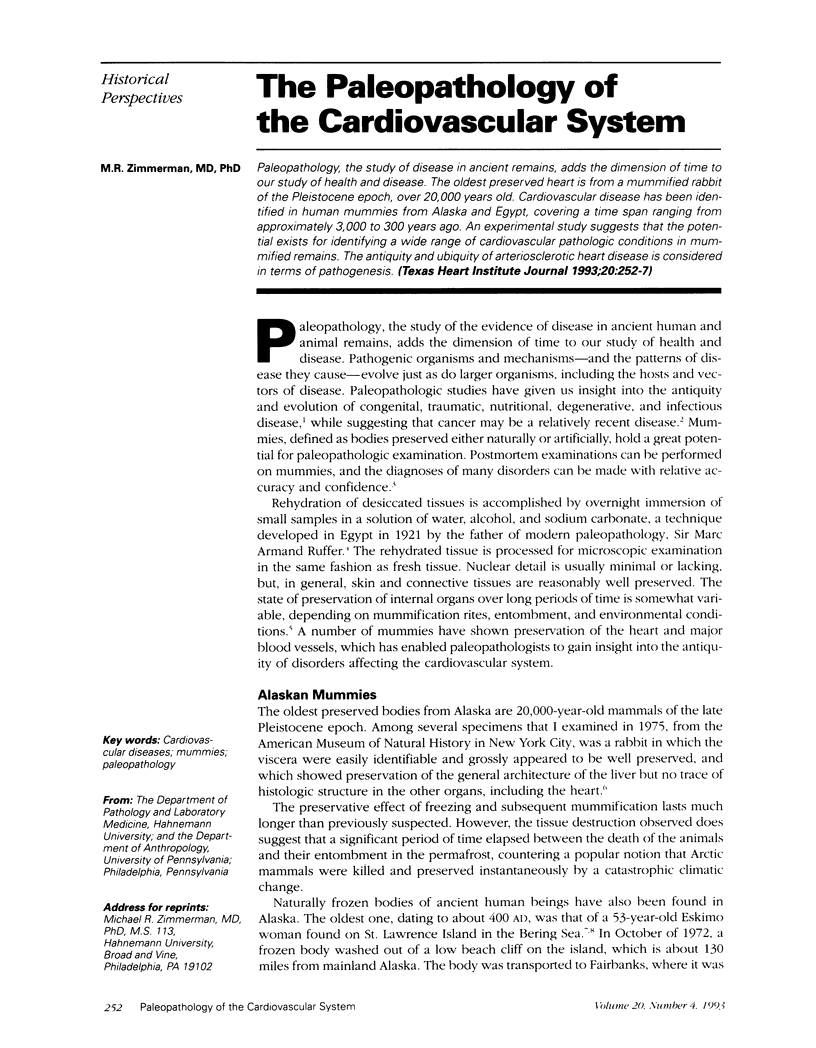
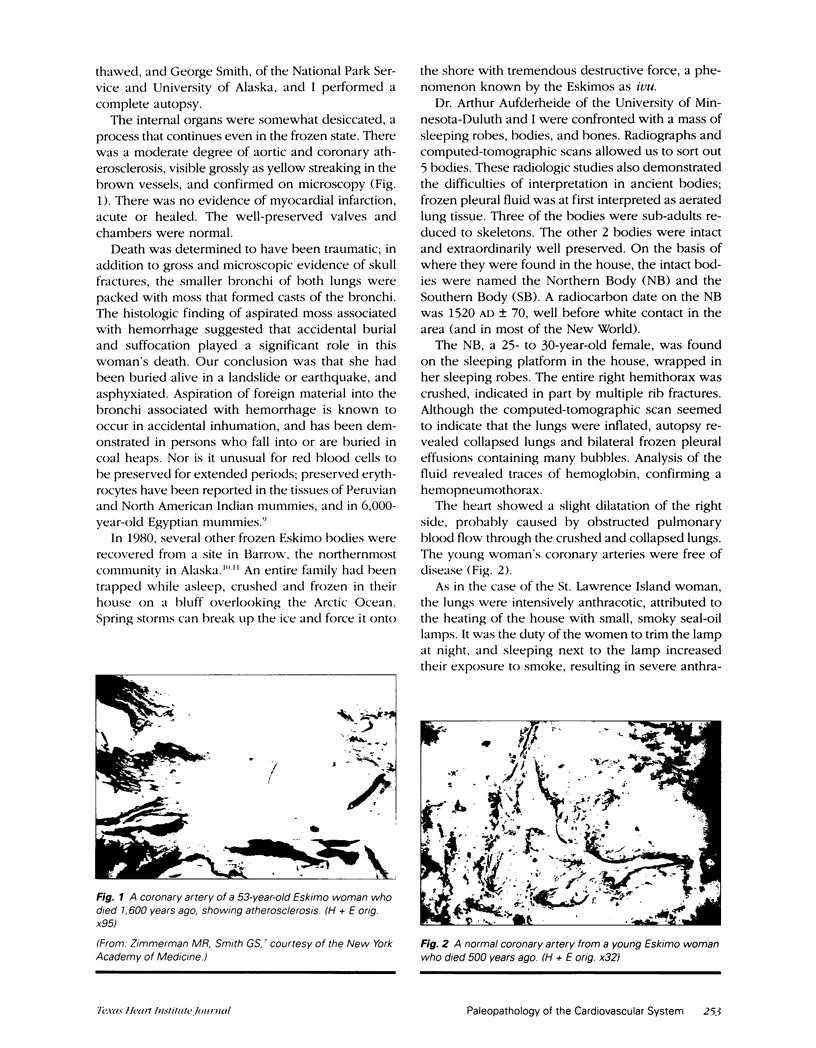
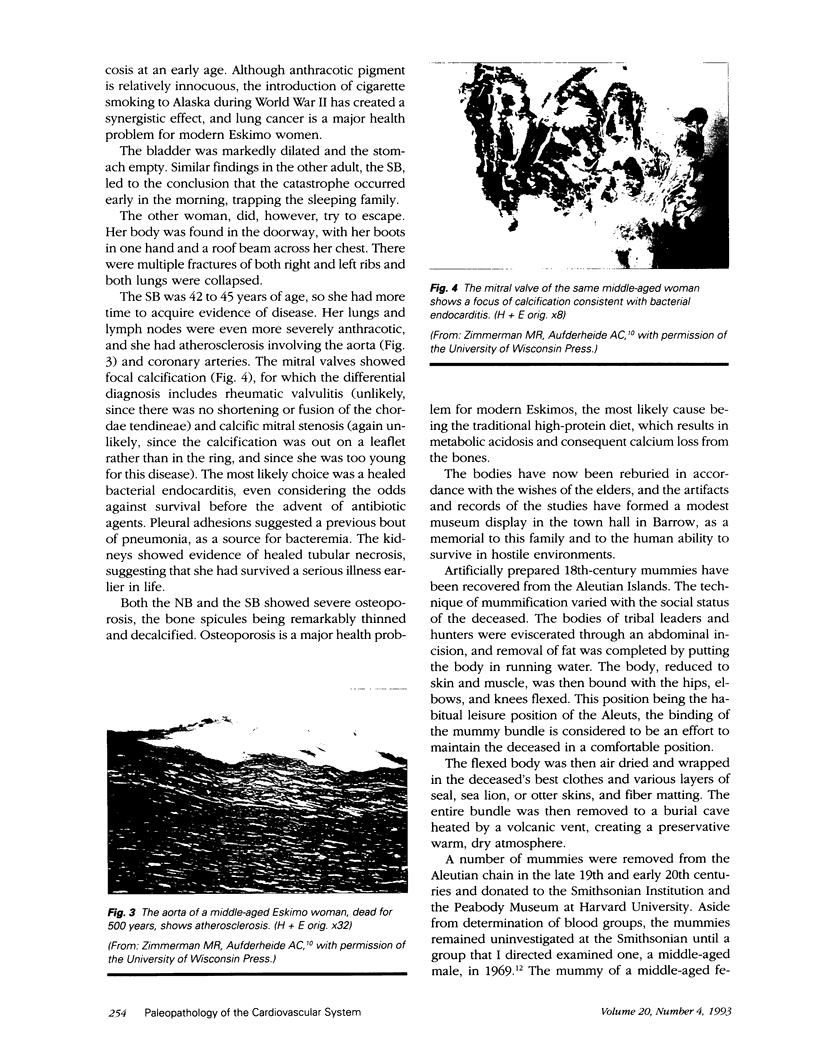
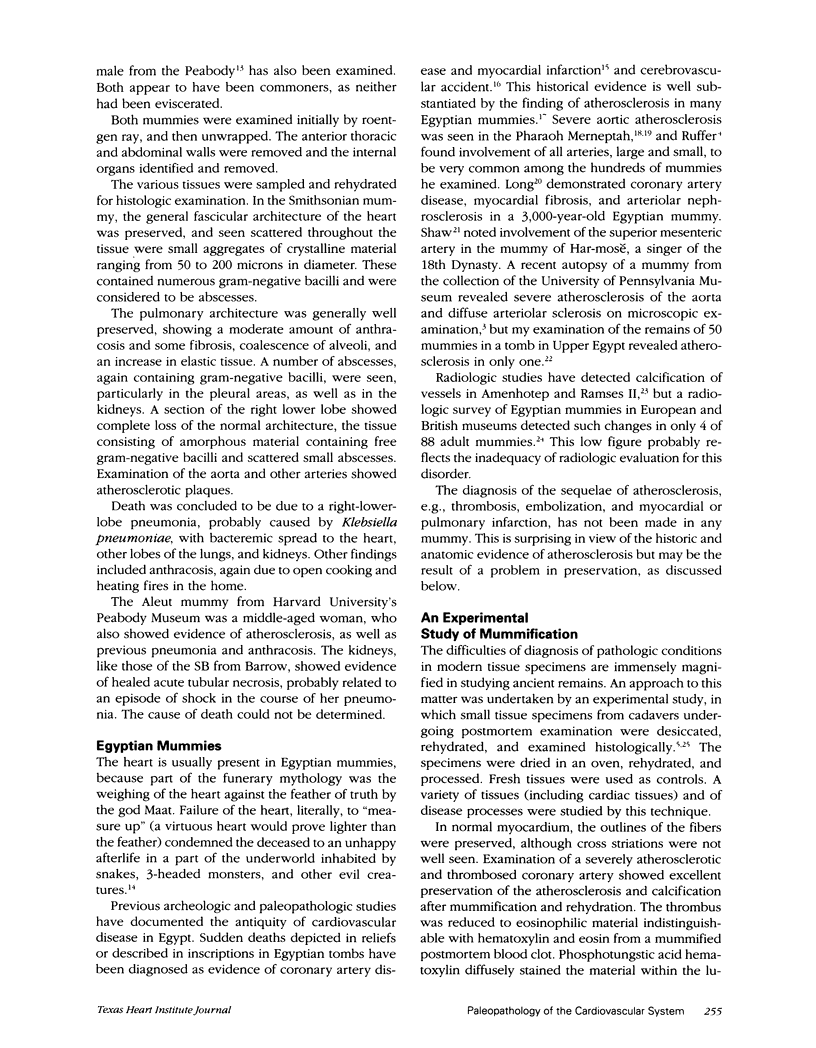
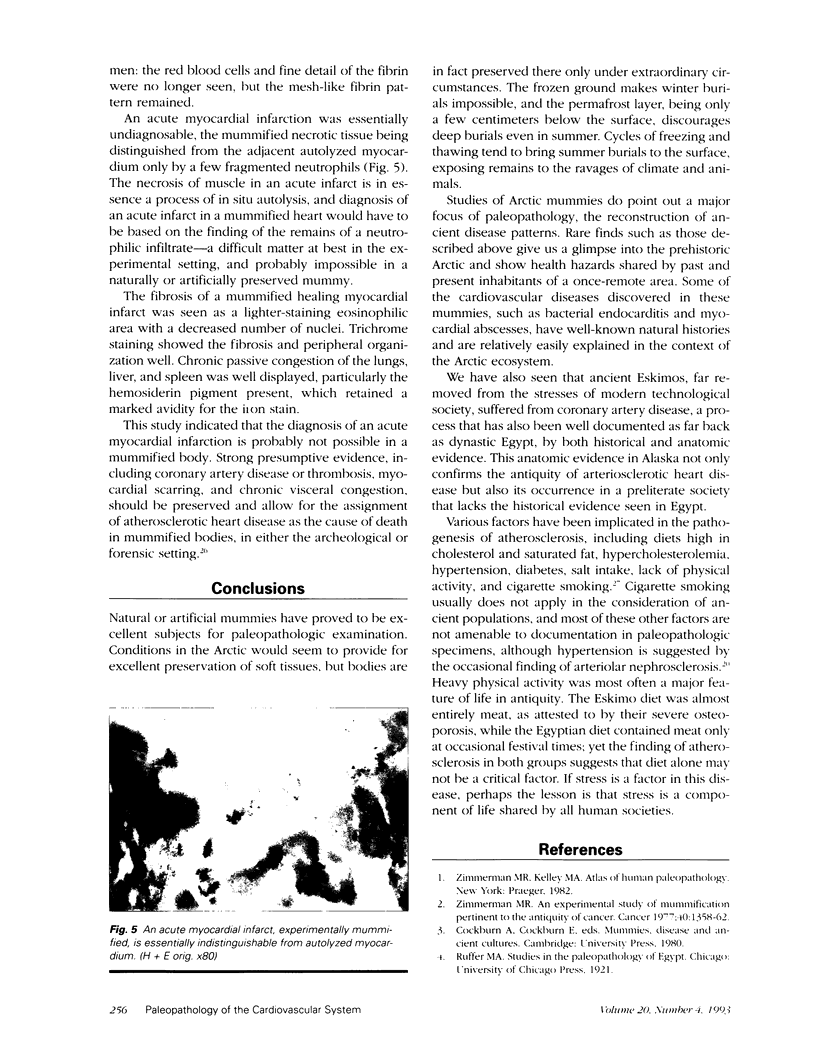
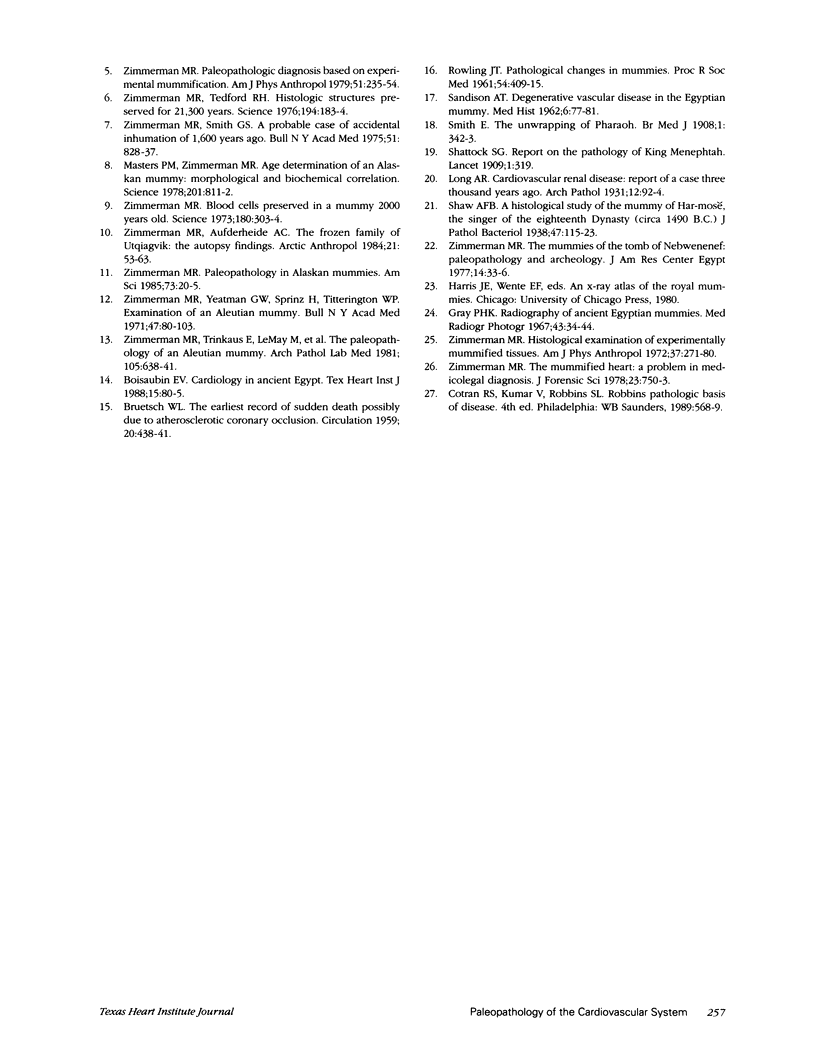
Images in this article
Selected References
These references are in PubMed. This may not be the complete list of references from this article.
- BRUETSCH W. L. The earliest record of sudden death possibly due to atherosclerotic coronary occlusion. Circulation. 1959 Sep;20:438–441. doi: 10.1161/01.cir.20.3.438. [DOI] [PubMed] [Google Scholar]
- Boisaubin E. V. Cardiology in ancient Egypt. Tex Heart Inst J. 1988;15(2):80–85. [PMC free article] [PubMed] [Google Scholar]
- Gray P. H. Radiography of ancient Egyptian mummies. Med Radiogr Photogr. 1967;43(2):34–44. [PubMed] [Google Scholar]
- Masters P. M., Zimmerman M. R. Age determination of an Alaskan mummy: morphological and biochemical correlation. Science. 1978 Sep 1;201(4358):811–812. doi: 10.1126/science.356264. [DOI] [PubMed] [Google Scholar]
- ROWLING J. T. Pathological changes in mummies. Proc R Soc Med. 1961 May;54:409–415. [PMC free article] [PubMed] [Google Scholar]
- SANDISON A. T. Degenerative vascular disease in the Egyptian mummy. Med Hist. 1962 Jan;6:77–81. doi: 10.1017/s0025727300026880. [DOI] [PMC free article] [PubMed] [Google Scholar]
- Zimmerman M. R. Blood cells preserved in a mummy 2000 years old. Science. 1973 Apr 20;180(4083):303–304. doi: 10.1126/science.180.4083.303. [DOI] [PubMed] [Google Scholar]
- Zimmerman M. R. Histological examination of experimentally mummified tissues. Am J Phys Anthropol. 1972 Sep;37(2):271–280. doi: 10.1002/ajpa.1330370212. [DOI] [PubMed] [Google Scholar]
- Zimmerman M. R., Tedford R. H. Histologic structures preserved for 21,300 years. Science. 1976 Oct 8;194(4261):183–184. doi: 10.1126/science.785601. [DOI] [PubMed] [Google Scholar]
- Zimmerman M. R., Trinkaus E., LeMay M., Aufderheide A. C., Reyman T. A., Marrocco G. R., Ortel R. W., Benitez J. T., Laughlin W. S., Horne P. D. The paleopathology of an Aleutian mummy. Arch Pathol Lab Med. 1981 Dec;105(12):638–641. [PubMed] [Google Scholar]
- Zimmerman M. R., Yeatman G. W., Sprinz H., Titterington W. P. Examination of an Aleutian mummy. Bull N Y Acad Med. 1971 Jan;47(1):80–103. [PMC free article] [PubMed] [Google Scholar]







